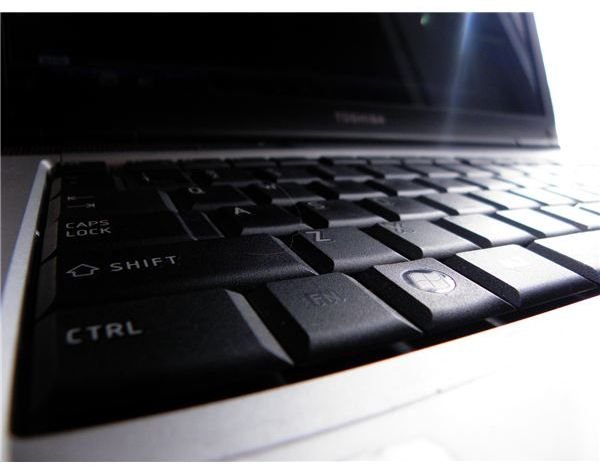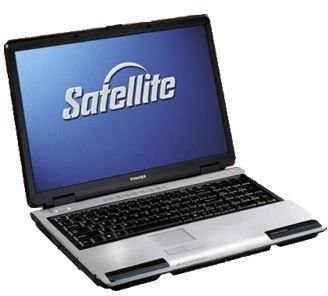Toshiba Satellite P100 Video Card Help
Video Problems With Your Laptop
In some respects, laptops are amazing. They’re portable, they don’t need a cord, and they can pretty much do anything that a traditional desktop computer can do. The downside? They’re smaller, which means everything on the inside has to be expertly compacted to ensure a stable performance, and to make sure that no two things are too close for fear of overheating issues. For the most part, people won’t experience too much an issue with such things, as by the time individual pieces of a laptop begin to go out, it’s about time to replace the laptop anyway. Every so often, however, a single piece of hardware will fail for seemingly no reason at all, and you’ll need to know if there’s any way to fix it.
Let’s say you’re in this situation; your warranty just expired and now everything is totally breaking on you. Stressful, right? Well, I’m going to advise you right here and right now: Some of the options you have here are nearly as expensive as getting a new laptop altogether, and they require quite a bit more work. I would almost like to say that you’re better off just scrapping your computer if it’s more than five years old and starting to have a problem. If, however, you’re adamant about trying to fix the problem, then read on. I’ve got some great ideas on how to troubleshoot any Toshiba Satellite P100 video card problems you may come across.
Can I Replace My Laptop Video Card?
If you’ve had a lot of laptops over the course of your life, you’ve probably noticed that a lot of them don’t allow for too much customization in terms of the stuff that goes inside. This makes sense, because scaling things down for laptops and then precariously fitting them together is a tough thing to do, and reselling your parts is not always the most economical or business-smart idea. Some things, like hard drives and disc drives, are fairly simple to replace, while others are not worth the replacement cost, like motherboards. Video cards fall somewhere in between; on some P100 models, they’re swappable, but on others they’re stuck in there forever.
The original P-100-19x models were built so that the video card is integrated into the motherboard, and remember what I said about motherboards being too costly to replace? If you’ve got one of these models and your video card dies, you may as well buy a new computer, because a new motherboard costs as much anyway.
For other P100 models, like the P100-STxxx series, you actually may be able to get a new video card. Another option is to just upgrade to the P100-Sxxx series, which can handle pretty much anything graphically you’ll throw at it from around the time it came out.
Cleaning Your PC
If you start up your P100 one day and notice that the screen is behaving erratically, images are distorted, it gives you a blue screen of death, or things are visually unsound, then there’s a three-step process you’ll want to follow to try to locate and fix the problem: Clean, Install, Replace.
Clean: The first thing you’ll want to try and do is as simple as taking apart your laptop and unhooking, cleaning, and re-attaching your video card. Okay, maybe it’s not as simple as my article is making it sound, but it’s more than doable. What this will require is a screwdriver, a plastic spudger/butter knife, a screw tray, a knowledge of what the video card looks like and a knowledge of taking things apart. If you think you’ve got all these things, do some Googling to find the proper procedure and then have at it. Don’t get too concerned about difficulty. Most Satellite part replacements are very simple to do.
To clean a piece of computer hardware, normally a cotton swab and some rubbing alcohol will do, but don’t just put it wherever you want. Make sure you only clean the parts that have dirt,dust, or grime built up on them. Then reconnect the card and start everything back up.
Install the Drivers
Install: The next step is to uninstall your graphics drivers, download new ones, and reinstall them. To do this, the first thing you’ll want to do is head into your drivers list which can be found by right clicking on “My Computer,” selecting “Properties,” going over to the “Hardware” tab, and then choosing the “Device List.” You’ll be looking for drivers located under a “Graphics Card” or a “Video Card” label, and when you find it, click the little plus sign to expand the list. Select the drivers you want to uninstall (there should only be one), right click, and select “Uninstall.”
After this has finished, I’d recommend booting into Safe Mode + Networking (just to be safe), then heading over to Toshiba’s website to locate the correct drivers. You can find them by going to the “Laptops” section of their website and then selecting “Get Support” in the upper right hand corner. Afterwards, choose “Downloads,” navigate to the P100, and you’re set to go. Just download the graphics card drivers, run the program when it finishes, and follow the on screen instructions.
Replace the Card

Replace: Unfortunately, as it turns out, you may just end up replacing the card altogether. If neither of the aforementioned methods helped you at all, you’re pretty stuck and out of luck as far as the computer is concerned, so you’ll probably want to replace the current Toshiba Satellite P100 video card in exchange for a new one. There is one thing to take into account though, and that’s whether your graphics card is tethered to your motherboard. If it is, then you’re really out of luck, because that means you’d need to replace the entire motherboard, which is as expensive as buying a whole new computer, and a heck of a lot more work to do.
So what it comes down to is, if nothing here helped you, you should probably just replace the laptop. As of this writing, this model is nearly five years old.
References
- [Information] TechSupport Forums, http://www.techsupportforum.com/forums/f108/toshiba-satellite-p100-video-issue-299168-2.html
- [Information] TechRepublic, Removing unused device drivers, http://www.techrepublic.com/article/removing-unused-device-drivers-from-windows-xp-machines/6017628
- [Image] Toshiba Satellite Image 2, http://upload.wikimedia.org/wikipedia/commons/8/84/ToshibaSatellite-L305D.JPG
- [Information] Notebook Review, http://forum.notebookreview.com/hardware-components-aftermarket-upgrades/232481-toshiba-p100-video-card-upgrade.html
- [Image] Toshiba Satellite Image 1, http://www.ndc.co.uk/Toshiba_Satellite_P100_Laptop_with_17_Trubrite_Display-13542.html?country_id=230#GBP&Language=English
- [Information] Author Knowledge
